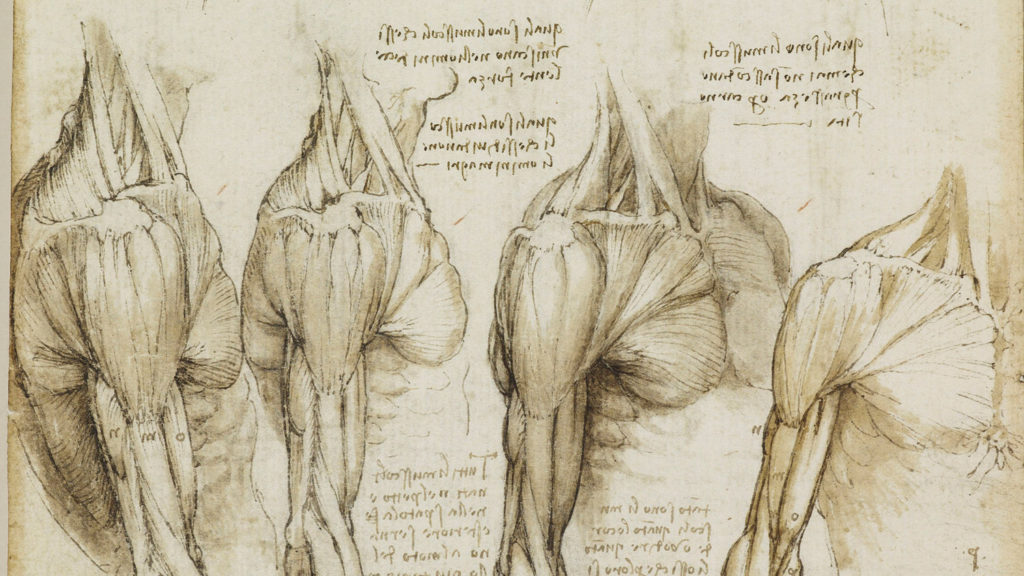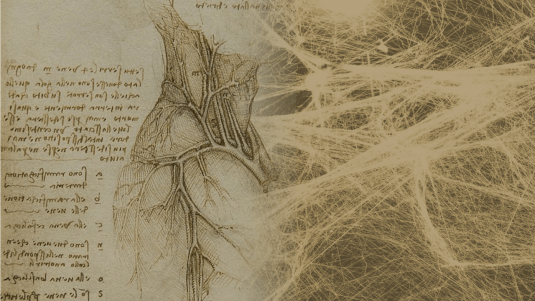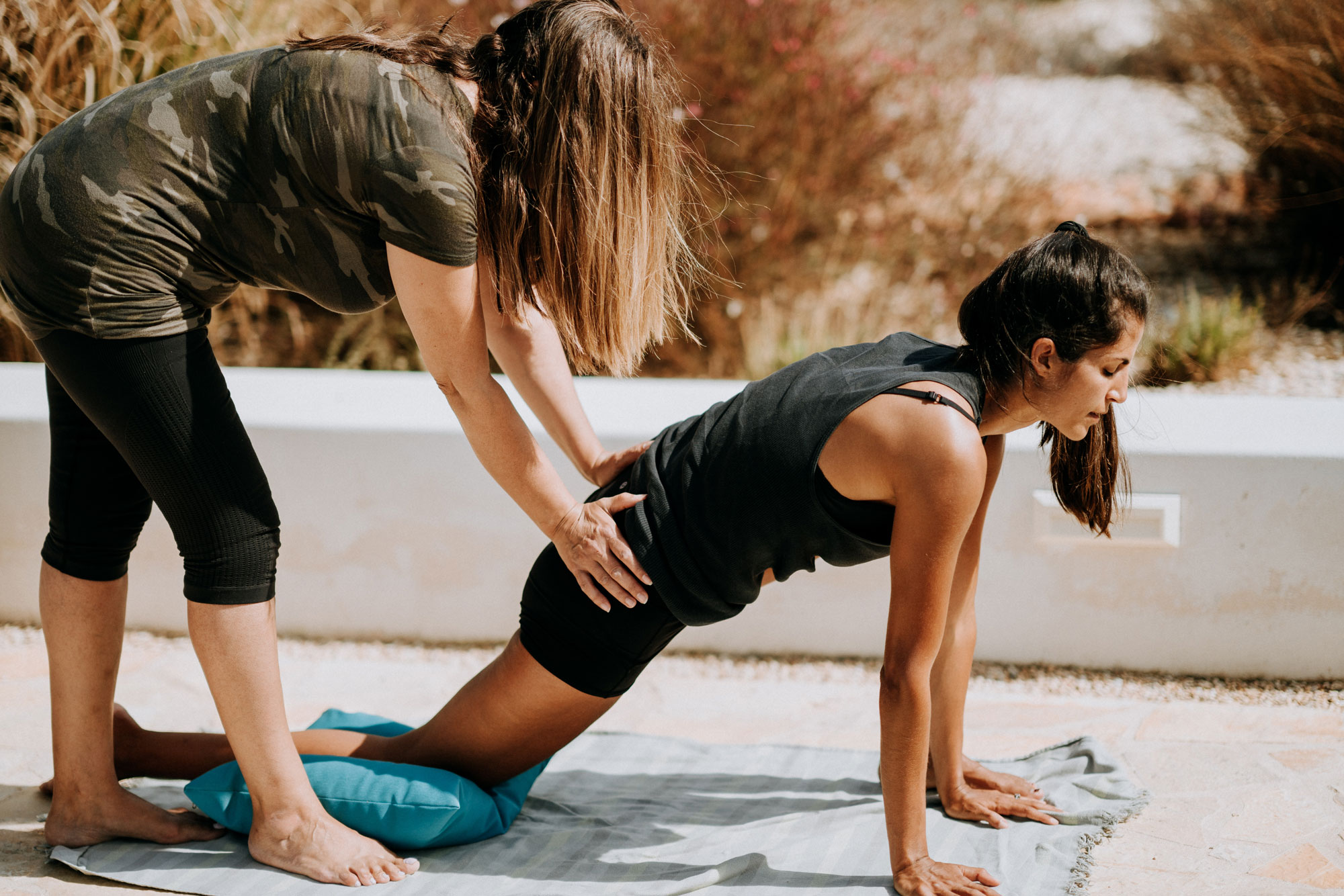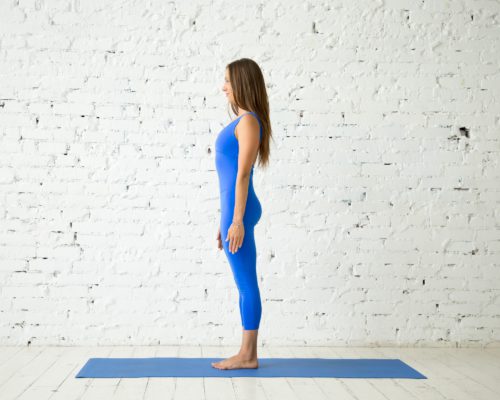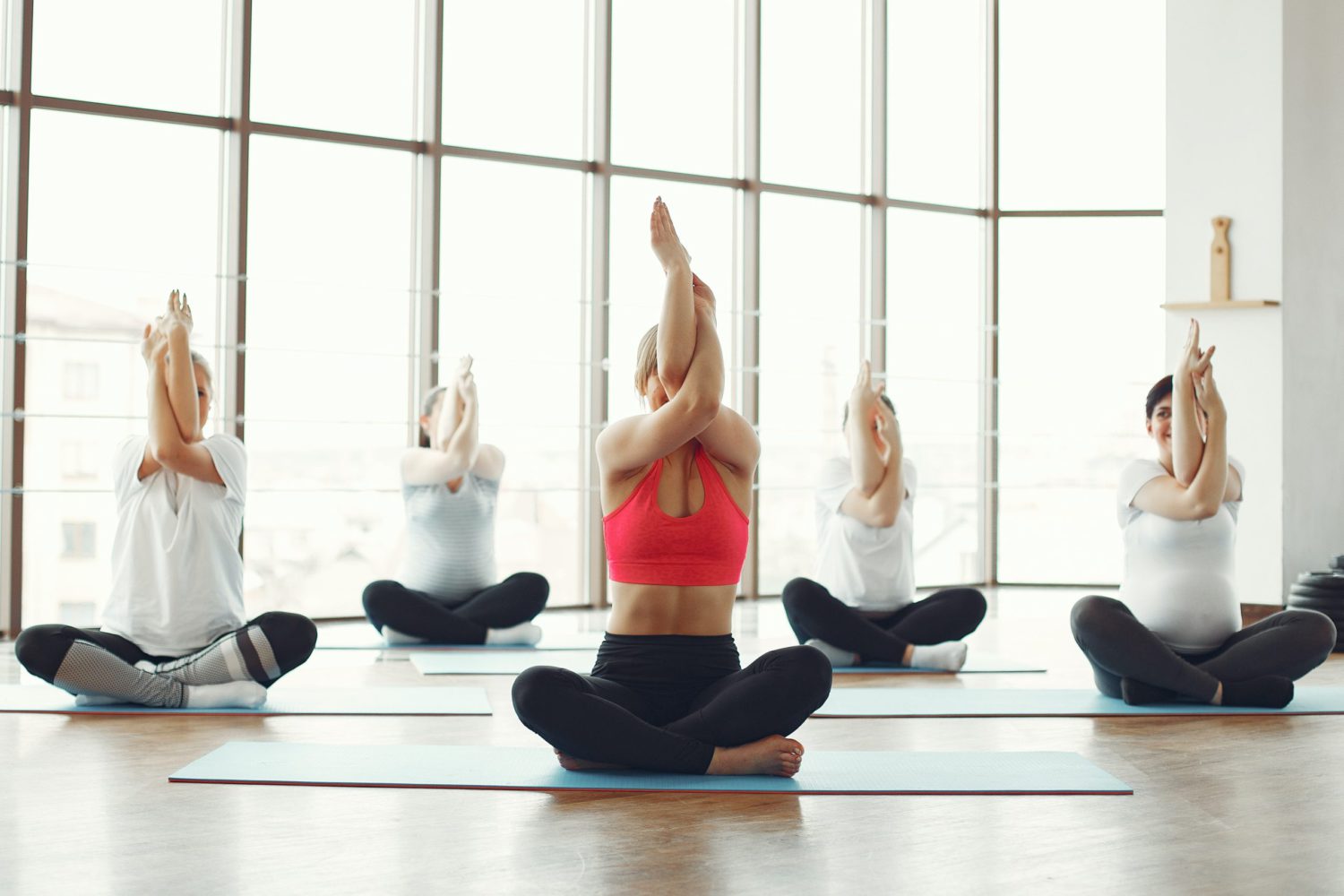
The conventional Western medicine approach favors pain management medications that merely mask the problem. More often than not, the root causes are ignored. In fact, if you read the label on any over-the-counter pain relief mediation, you’ll notice the words “for temporary relief”. Acetaminophen is one of the most common active ingredients for over-the-counter pain relief mediation. Acetaminophen blocks an enzyme that sends out chemicals called prostaglandins that enables the transmission of pain signals to our brain. In contrast to the conventional Western approach, a holistic approach digs into the root of the issue. The root is complex and multi-faceted and requires us to address the body as a whole, interconnected system where the physical pain is intertwined with emotional and psychological pain. Instead of relying on pain mediation, swap it for a regular yoga practice.
Pain can make you feel worse mentally. In fact, your mind produces the sensation of pain without a physical trigger or it can sometimes persist past the initial physical trigger. This phenomenon is called psychogenic pain. It occurs when your pain is related to underlying psychological, emotional, or behavioral factors. Much research has documented the link between chronic pain and depression. Though not fully scientifically reasoned by psychologists, some researchers believe this depression as a result of pain may be programmed into our wiring evolutionally. That seems to make intuitive sense – withdrawing from society and the external environment provides the body with a peaceful, less-stimulative environment, setting up the body for the fullest healing potential. However, fully surrendering into this natural introversion tendency would keep the mind and body in a perpetual downward spiral – humans are inherently social creatures and require interaction with other beings to maintain a sense of balance and wellbeing. Where would we start to break the downward spiral and regain our health and heal our pain?
Our Fascia Holds the Key
The body is an interconnected system where the whole is far greater than the sum of its parts. The clues to understanding this complex system lie in the fascia. Composed of firm but flexible collagen, the fascia forms a complex web of connective tissue that reaches every corner of your body. It’s easier to visualize the fascia by examining an orange. If we imagine the orange peel to be like our skin, the fruit on the inside would be like all our internal organs and muscles. The spongy stringy substance between the peel and the fruit, called the pith, would then be analogous to our fascia. If you’ve ever peeled an orange, you’ve probably noticed that it connects to everything.

Fascia, as its understanding in the modern-day, was discovered by Dr. Andrew Taylor Still, the founder of Osteopathy in the late 19th century. For many decades, conventional science has disregarded fascia as merely passive supportive tissue with no function of its own. However, an interesting fact is that Leonardo Da Vinci did not neglect the importance of this enigmatic structure. In his scientific drawings of cut-up human cadavers, the fascia was depicted in great detail, indicating his recognition of the structure’s importance. Yes, fascia is a supportive tissue structure and holds things together, but what’s behind its workings is far more complicated. Fascia coats all nerves – just taking that fact in, you can begin to understand how it plays a key role in our movement and our psychological state.
In recent years, the revolutionary idea that tissues may hold memories began to gain acceptance. Paolo Tozzi of the School of Osteopathy CROMON in Italy was the first to posture this hypothesis – fascia can carry memories and emotions. While still a controversial topic, many bodyworkers have experienced phenomena that can be interpreted as a release of traces of memories when working with a patient to heal dysfunctional tissues. Since fascia coats all nerve endings, irritation of these fibers can launch the release of neuropeptides. This reaction alters the surrounding tissues and may trigger many responses throughout the body, including inflammation and persistent pain.
Memories in the body can also be imprinted into the fascia itself. Collagen is deposited along the lines of tension imposed upon connective tissues. Mechanical forces, such as movements, determine where the collagen is deposited. There are known psychological responses when such mechanical stress is imposed, such as modifications of gene expression. As Tozzi conducted his research, he uncovered a paper from 1990 suggesting an “emotional scar” is formed in the fascia after substance P is rebased during the traumatic event. This, in turn, would alter the collagen structure into a unique hexagonal shape.
A Strange Sum of the Parts
Tozzi also discusses a theoretical model of memory storage suggesting that memories are not localized in the brain, but instead, are diffused throughout the brain. The conclusion came about after experiments using electrical stimulation on a targeted site in the brain was shown to activate records of memories. However, the same electrical stimulation at a different site of the brain would also produce the same recollections, leading the researchers to conclude results that memories are indeed diffused throughout the brain. We know that different brain regions govern different parts of the body. It’s fair to reason that while our brain’s interpretation of pain is localized from a region of the body, it’s likely that the actual stimuli may not be.

The Takeaway: Pain Management Necessitates a Holistic Approach.
As we’ve learned, fascia is constantly remodeling itself based on the demands applied to it. The dynamic sequences in yoga stimulate fascia adaptations and the longer holds help release it. On that description, it would seem there are countless numbers of physical activities that fit the bill. However, yoga is one of the few that engages the body in full stretches to explore the full range of motion in each body region. The interplay between dynamic stretching yin stretching is also a uniquely beneficial component of yoga. In classical stretching, or static yin stretching, myofibers are relaxed and muscles are elongated. Depending on the orientation of the fascial tissue, some are being stretched but the majority are not. In dynamic stretching, muscles are active and loaded to the full extent – the majority of fascial tissues are being stretched and stimulated. Many of us can think back to our days stretching as a child where we innately engaged in a bouncing action. It would seem that the latest research confirms the merits of this method. Though not often found in traditional techniques of yoga, an increasing number of yoga teachers in the modern day are embracing this method.
Spirituality and mindfulness is a big aspect of yoga. Given that external mechanical stresses that cause physical pain produces “emotional scarring” and affect our psychological state, perhaps the cause and effect chain also works in reverse – we improve our psychological state to improve our physical pain. Mindfulness techniques root back to our breath. Breath plays a vital role in getting the lymphatic system moving, creating the feeling of lightness in your body and changes the mind’s perception of the body’s ability to move. When we breathe, the diaphragm, intercostal muscles, abdominal muscles, and muscles in our neck and collarbone area are activated. We often unconsciously hold our breath for prolonged periods during stress. Not only is the fascia over our lungs is restricted, fascial tissues around all these muscles are affected, causing inflammation throughout the body. No longer is our mind’s interpretation of pain coming directly from the physical stimuli, it’s been exacerbated by the stress over the muscles involved in breathing. If we embrace a mindfulness practice, we can minimize the additional pain interpretation and begin the unwind of the experience of chronic pain.
For more on pain management, check out MixPose’s targeted class schedule or try a personalized session with one of our instructors! Our daily yoga classes are led by skilled instructors, all of whom are qualified to help you modify yoga poses to appease any existing limitations or conditions you may have.
